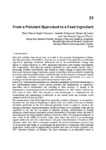Please use this identifier to cite or link to this item:
http://www.alice.cnptia.embrapa.br/alice/handle/doc/905913Full metadata record
| DC Field | Value | Language |
|---|---|---|
| dc.contributor.author | PONSANO, E. H. G. | pt_BR |
| dc.contributor.author | LIMA, L. K. F. de | pt_BR |
| dc.contributor.author | TORRES, A. P. C. | pt_BR |
| dc.date.accessioned | 2011-11-14T11:11:11Z | pt_BR |
| dc.date.accessioned | 2011-11-14T11:11:11Z | pt_BR |
| dc.date.available | 2011-11-14T11:11:11Z | pt_BR |
| dc.date.available | 2011-11-14T11:11:11Z | pt_BR |
| dc.date.created | 2011-11-14 | pt_BR |
| dc.date.issued | 2011 | pt_BR |
| dc.identifier.citation | In: MATOVIC, D. (Ed.). Biomass: detection, production and usage. Rijeka: Intech, 2011. | pt_BR |
| dc.identifier.isbn | 978-953-307-492-4 | pt_BR |
| dc.identifier.uri | http://www.alice.cnptia.embrapa.br/alice/handle/doc/905913 | pt_BR |
| dc.description | The hypothesis to be tested in this chapter is that an industrial byproduct may undergo a biological treatment yielding biological treatment yielding a product with application. The objective of this chapter was to describe a study on the transformation of a fish processing wastewater into a product with potential of use in animal rearing. | pt_BR |
| dc.language.iso | eng | eng |
| dc.rights | openAccess | eng |
| dc.title | From a pollutant byproduct to a feed ingredient. | pt_BR |
| dc.type | Parte de livro | pt_BR |
| dc.date.updated | 2017-07-18T11:11:11Z | pt_BR |
| dc.subject.thesagro | Peixe | pt_BR |
| dc.subject.nalthesaurus | Fish | pt_BR |
| dc.subject.nalthesaurus | Wastewater treatment | pt_BR |
| dc.description.notes | Cap. 23. | pt_BR |
| dc.format.extent2 | p. 461-472. | pt_BR |
| riaa.ainfo.id | 905913 | pt_BR |
| riaa.ainfo.lastupdate | 2017-07-18 | pt_BR |
| dc.contributor.institution | ELISA HELENA GIGLIO PONSANO, UNESP, Araçatuba-SP; LEANDRO KANAMARU FRANCO DE LIMA, CNPASA; ANE PAMELA CAPUCCI TORRES, UNESP, Araçatuba-SP. | pt_BR |
| Appears in Collections: | Capítulo em livro científico (CNPASA)  | |
Files in This Item:
| File | Description | Size | Format | |
|---|---|---|---|---|
| ponsano.pdf | 196.33 kB | Adobe PDF |  View/Open |









